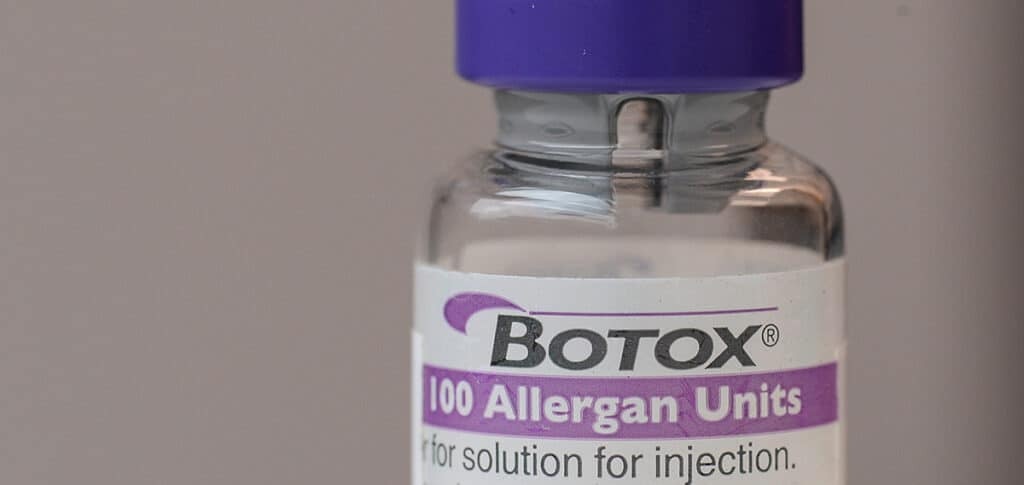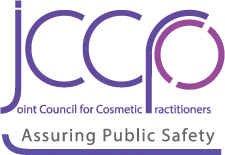Medical Aesthetics And Cosmetic Treatment Definitions

The Joint Council of Cosmetic Practitioners (JCCP) has, for the first time, set out the definition of medical aesthetics treatments. It has also defined treatments which it says should be considered “medically-related” and “cosmetic”.
As we set out in our previous article, these definitions are significant to the industry as they offer clarity in this grey area. They should also support movements towards appropriately qualified and licensed medical professionals being the only practitioners to carry out injectable treatments.

Additionally, these clarifications influence how much VAT medical aestheticians should pay, given VAT exemption is only afforded to treatments deemed provably “medical”. However, whether the HMRC will accept the JCCP’s definitions for tax purposes has not been confirmed at the time of writing.
JCCP aesthetics treatment definitions overview
The JCCP has broken down current aesthetics treatments into three areas.
- Medical
- Medically-related
- Cosmetic
It states that treatments in each of these categories should only be performed by or under the supervision of a “health care professional”.
Specifically, this is defined as: “a person associated with either a specialty or a discipline and who is qualified and registered by one of the designated Government Professional Statutory Regulatory Bodies to provide a healthcare service to a patient (e.g. the GMC, GDC, NMC, GPhC and the HCPC).
“The status of health care professional is protected in law and imposes obligations and responsibilities on the regulated individual. The individual must abide by a set of practical and ethical behaviours that can extend beyond their work and into their personal life.
“To maintain registration the practitioner must demonstrate ongoing competence, good character and an ability to work within a defined framework of competence.”
The JCCP continues, stressing the importance of the trust placed in health care professionals and the responsibility they have to only perform treatments that they are sufficiently, or ”proportionately” trained in and which are in the patient’s best interest.
“Another feature of this relationship is the requirement that all health care professionals have a ‘duty of care’ (as defined in law) to their patient,” the document states.
“A health care professional must be able to demonstrate that they have undertaken sufficient training/education and are proficient to undertake any specific treatment/procedure that they intend to perform prior to doing so.”
This sets “health care professionals” apart from cosmetic practitioners who are often unregistered, with little training and no legal duty of care requirements.
Who decides whether treatments are medical, medically related or cosmetic?
Essentially, it is up to each individual practitioner to determine which category a treatment belongs to. They should decide this based upon the suggestions the JCCP sets out in its definitions document, which we recommend you read through in full.
Which aesthetic treatments are classed as “medical”?
The JCCP counsels only health care professionals with commensurate levels of training are able to determine whether treatments are “medical”, “medically related” or “cosmetic”.
Here we look at some of the aesthetic treatments which may be deemed “medical” in nature and why.
Examples of medical aesthetics treatments include:
Botulinum toxin for the treatment of medical conditions, such as:
- hyperhidrosis
- chronic migraine
- dystonia.
These are medical conditions which have, as the JCCP explains, “been classified within the meaning of the ‘International Classification of Diseases’ (ICD11) – WHO, 2018, Geneva”. Therefore, administering botulinum toxin for these and other such conditions is considered to always be a medical treatment.
In cases where treatment is not listed under ICD11 but a health care professional can prove there is a therapeutic benefit, this can also be considered a “medical” treatment.
“Any procedure can be medically determined, provided that it can be demonstrated that the procedure has an evidence-based clinical therapeutic benefit and is considered by the health care professional to be in the patient’s best interests following the completion of an agreed (and recorded) pre-treatment holistic assessment of the patient’s presentation and an exploration of the patient’s expectations with regard to perceived treatment outcome,” according to the JCCP’s advice on making this “medical” determination.
Medical treatments may or may not be elective and may require Care Quality Commission (CQC) registration.
It is important to note that it is possible to perform one treatment for one patient and it to be considered “medical”, then to perform the same treatment for another patient and it to be classified as “cosmetic”. Categorisation relies on the health care professional’s educated determination and ability to back up their reasoning with supporting evidence. This includes the patient’s reason for having the treatment.
What are medically-related treatments?
In addition to “medical” and “cosmetic”, the JCCP has created a category for aesthetics treatments it considers “medically-related”.
This is for “medical” procedures which are always elective and may fall outside the scope of the aforementioned ICD11. As the JCCP outlines:
“A medical procedure will be linked to an ICD11 code and may require CQC registration. A medical treatment may or may not be elective. This does not apply to medically related procedures, instead in such cases the regulated professional will be required to exercise their clinical judgement and diagnostic skills to determine and evidence a reasonable and genuine therapeutic benefit for the treatment. Medically related procedures are always elective.”
When determining the therapeutic benefits to a patient, it is important to consider the following:
“A therapeutic benefit is a positive result that occurs as a result of a method used to treat a disease or disorder… A treatment may be considered to have therapeutic benefit if it enhances an individual’s physical or mental well-being.
“It should be noted that a treatment may be of therapeutic benefit whether or not it is classified as a medical or medically-related treatment, in such cases where the treatment has a positive effect on the individual’s well-being and mindfulness.
“It is however important to note that it may sometimes be important to categorise a specific therapeutic method of treatment as a medical treatment or not in order to comply with professional regulatory compliance standards.
“‘Therapeutic’ in this context therefore relates to the specific medical or medically related intention that requires remediation. Benefit relates to the outcomes as measured against the intentions. It follows therefore that when a regulated health care practitioner assesses the outcome or benefit of the treatment, they are assessing improvement against the ‘baseline’ presenting problem – physical, psychological or psychosocial, rather than focussing exclusively on cosmetic/appearance related improvement.”
Examples of medically related aesthetics treatments, may therefore include:
- non-surgical rhinoplasty where the patient is distressed by their nose and it is believed they will benefit psychologically from having this procedure
- soft tissue filler to correct scarring which is causing the patient psychological distress
Which aesthetics treatments are considered “cosmetic”?
Cosmetic treatments, according to the JCCP, are those which are elective and without a medical diagnosis from a suitably qualified and registered health care professional.
As the JCCP sets out: “By definition any proposed elective non-surgical aesthetic procedure that is not linked to a ‘medical’ or ‘medically related’ diagnosis (as determined by a suitable qualified and registered healthcare professional’) and which does not have a clinically determined therapeutic outcome benefit for the patient can be defined as being purely cosmetic in nature.”
Examples of cosmetic aesthetics treatments include:
- botulinum toxin for the purpose of anti-ageing
- soft tissue fillers for facial contouring
- lip augmentation for purely cosmetic purposes
Again, we highly recommend reading through the full JCCP document and familiarising yourself with these categorisations.
All information correct at the time of publication
Download our full prospectus
Browse all our injectables, dermal fillers and cosmetic dermatology courses in one document
By submitting this form, you agree to receive marketing about our products, events, promotions and exclusive content. Consent is not a condition of purchase, and no purchase is necessary. Message frequency varies. View our Privacy Policy and Terms & Conditions
Attend our FREE open evening
If you're not sure which course is right for you, let us help
Join us online or in-person at our free open evening to learn more
Our Partners














STAY INFORMED
Sign up to receive industry news, careers advice, special offers and information on Harley Academy courses and services

